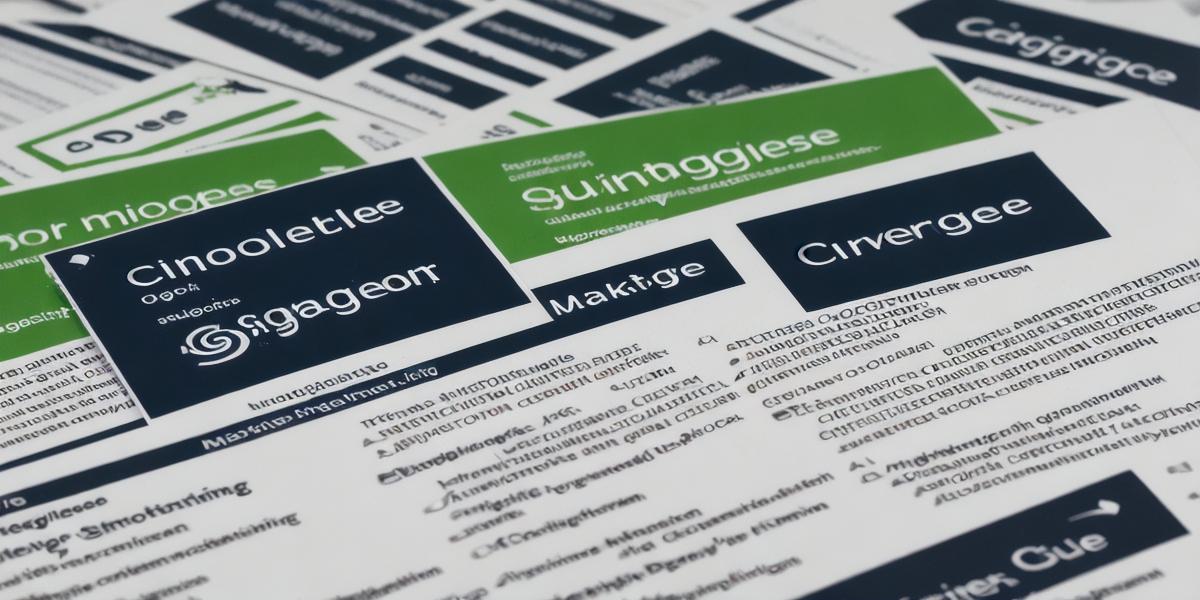Marketing is a crucial aspect of any business, and it can significantly impact the success or failure of your company. With so many marketing tools and techniques available, it can be challenging to determine which ones are most effective for boosting business growth. In this comprehensive guide, we will explore some of the most effective marketing tools and techniques for business growth, along with case studies and expert opinions to help you make informed decisions.
1. Content Marketing: The Power of Creating Valuable Content
Content marketing is a powerful tool that can help businesses build brand awareness, attract new customers, and retain existing ones. By creating valuable content that addresses the pain points and interests of your target audience, you can establish your business as an authority in your industry and build trust with potential customers.
According to HubSpot, 82% of marketers believe content marketing is effective for building brand awareness, and 70% of marketers say it has increased their lead generation. By creating a blog, videos, infographics, e-books, or any other type of valuable content that resonates with your target audience, you can attract more organic traffic to your website, build relationships with potential customers, and establish your business as an authority in your industry.
Case Study: Dollar Shave Club
Dollar Shave Club is a great example of how content marketing can drive business growth. In 2012, the company released a hilarious video on YouTube that went viral, with over 7 million views in just one day. The video featured co-founder Michael Dubin making fun of traditional razor commercials and showcasing the convenience of Dollar Shave Club’s subscription service.
The success of the video led to a massive surge in traffic to the company’s website, with sales increasing by over 1200% in just one day. Today, Dollar Shave Club is valued at over $1 billion and has been acquired by Unilever.
2. Social Media Marketing: Building Strong Connections with Your Audience
Social media marketing is an essential tool for building brand awareness, engaging with your target audience, and driving sales. By creating a strong presence on popular social media platforms such as Facebook, Twitter, Instagram, LinkedIn, and TikTok, you can reach new customers, build relationships with existing ones, and stay top of mind in the minds of potential buyers.
According to Hootsuite, 68% of marketers believe that social media is an effective way to drive traffic and leads to their website, while 70% of people use social media to make purchasing decisions. By using social media to promote your products or services, engage with your audience, and build a strong brand identity, you can attract new customers and retain existing ones.
Case Study: Nike
Nike is an excellent example of how social media marketing can drive business growth. The company has over 500 million followers on Instagram alone, and it uses the platform to showcase its products, engage with its customers, and promote its brand values.
In one example, Nike partnered with musician Travis Scott to create a limited-edition sneaker collection. By using social media to promote the collection and engaging with its followers, Nike was able to sell out of all pairs within minutes, generating over $1 million in sales.
3. Email Marketing: Building Long-Term Relationships with Your Customers
Email marketing is a powerful tool for building long-term relationships with your customers and driving repeat business. By collecting email addresses from potential customers and sending them valuable content, promotions, and updates about your products or services, you can stay in touch with your audience and build trust with potential buyers.
According to Mailchimp, 82% of marketers say that email is their preferred method of communication for acquiring new customers, while 74% of customers prefer receiving promotional emails from brands they already know and trust. By using email marketing to nurture leads, promote your products or services, and build relationships with your customers, you can generate repeat business and drive long-term growth.

Case Study: Dropbox
Dropbox is an excellent example of how email marketing can drive business growth. In 2014, the company launched its first email campaign to promote its new referral program, offering users $500 for each referral that signed up for the service. By using email marketing to promote the program and engage with its customers, Dropbox was able to generate over 300,000 referrals within just one month, generating over $10 million in new revenue for the company.
4. Influencer Marketing: Building Trust with Your Target Audience
Influencer marketing is a powerful tool for building trust with your target audience and driving sales. By partnering with influencers who have a large following on social media, you can tap into their existing audience and promote your products or services to new customers.

According to Influencer Marketing Hub, 90% of marketers say that influencer marketing has increased their exposure and reach, while 71% say it has increased their website traffic and sales. By using influencer marketing to build trust with potential buyers, you can establish your business as an authority in your industry and drive sales.
Case Study: Glossier
Glossier is an excellent example of how influencer marketing can drive business growth. In 2014, the company launched its first product, a skincare line called Perfecting Skin Tint, which quickly became popular among beauty influencers on social media. By using influencer marketing to promote its products and build trust with potential buyers, Glossier was able to generate over $1 million in sales within just one month of launch.
5. Search Engine Optimization (SEO): Improving Your Online Visibility
Search engine optimization (SEO) is a crucial tool for improving your online visibility and driving organic traffic to your website. By optimizing your website’s content, structure, and keywords, you can improve your search engine rankings, attract more organic traffic, and build relationships with potential buyers.
According to SEMrush, 82% of marketers say that SEO has improved their online visibility and increased organic traffic to their website. By using SEO to optimize your website’s content and structure, you can improve your search engine rankings and attract more organic traffic to your site.
Case Study: Moz
Moz is an excellent example of how SEO can drive business growth. In 2010, the company launched its popular SEO software suite, which quickly became popular among digital marketers looking to improve their online visibility and drive organic traffic to their website. By using SEO to optimize its website’s content and structure, Moz was able to rank high on search engine results pages (SERPs) for relevant keywords, attracting more organic traffic to its site.
6. Pay-Per-Click Advertising (PPC): Targeting Your Ideal Customers
Pay-per-click advertising (PPC) is a powerful tool for targeting your ideal customers and driving sales. By using PPC ads on platforms such as Google Ads, Facebook Ads, or Instagram Ads, you can reach new customers who are actively searching for products or services like yours.
According to WordStream, 65% of marketers say that PPC has increased their website traffic and sales. By using PPC ads to target your ideal customers, you can generate high-quality leads and drive sales.
Case Study: Warby Parker
Warby Parker is an excellent example of how PPC advertising can drive business growth. In 2010, the company launched its popular online eyewear store, which quickly became popular among consumers looking for affordable, high-quality eyewear. By using PPC ads on Google Ads and Facebook Ads, Warby Parker was able to target its ideal customers and generate over $1 million in sales within just one month of launch.
Summary
There are many different marketing tools available to businesses today, but not all of them will be the right fit for your business. By understanding your target audience and their preferences, you can choose the marketing tools that will help you attract new customers and drive long-term growth. Whether you choose email marketing, influencer marketing, SEO, or PPC advertising, remember to measure and analyze your results regularly, adjusting your strategy as needed to ensure maximum impact.




